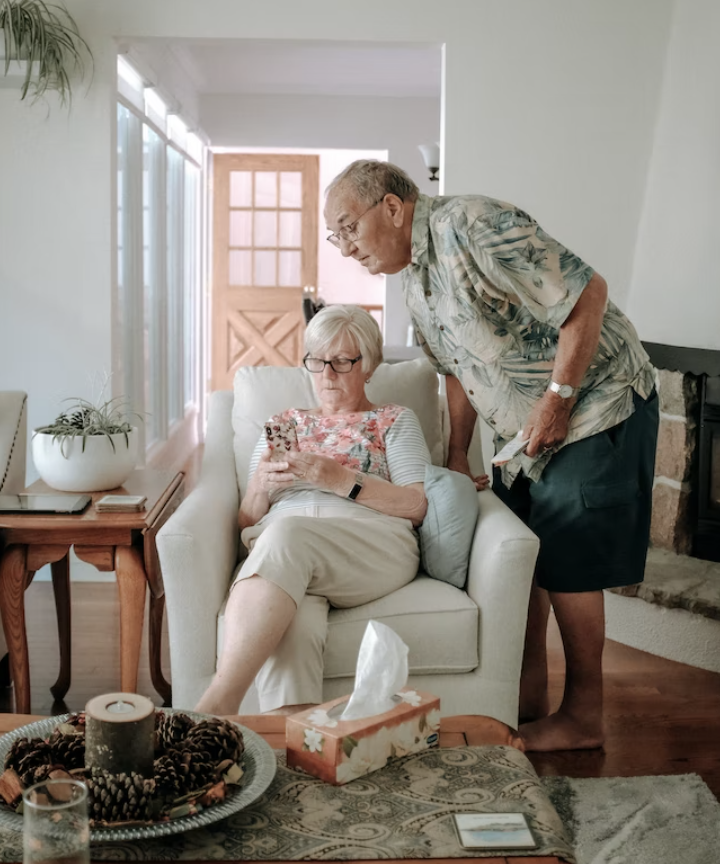At Home: Have You Done The Planning To Age in Place?
December 14, 2022

This past spring, a survey was conducted by The Associated Press and NORC at The University of Chicago to find out whether older adults are worried about “aging in place.” As it turns out, not so much, at least among those who are 65 and older. According to the survey results, nearly 8 in 10 adults 65 and over say they are extremely or very prepared to stay in their current homes as long as possible. Those ages 50-64 were less sure- only 6 out of 10 felt extremely or very prepared. Another recent poll, this one conducted by Bank of America, found that 70% of Gen Xrs (those born between 1965-1980) and Baby Boomers plan to retire in the homes they own and see no reason to move. Furthermore, the survey found that 69% of Baby Boomers have renovated or remodeled their homes to adapt them to fit their current lifestyles (and presumably physical abilities). These figures are not necessarily surprising, given we have lots of data showing that most older adults wish to age in place. And these responses correlate well with one more recent survey from the Center for Retirement Research that found that post-pandemic, 70% of surveyed seniors (these were in Canada but their responses would likely reflect American sentiments as well) are less likely to consider entering a nursing home. Seventy percent also agreed that they would be willing to pay higher taxes in order to get more subsidized help at home and an even greater number (83%) said they would be willing to save more money for home care if it helped them avoid entering a nursing home. These last sentiments express a serious concern for both families and policymakers dealing with the long-term care system: most people want to live at home but most communities (along with individuals) are often unprepared for what that means- in terms of both costs and caregivers.
You may have considered what it means to age in place, but have you asked yourself the hard questions that will help you really think about what you need and how you will respond to those needs? According to a recent Harvard Health post, the kinds of questions you need to be asking focus on your health, your safety at home, and the resources available in your community. So, do you have physical conditions that may limit your mobility or affect your ability to drive? Or affect your ability to navigate your home? Can you afford home renovations to overcome these challenges? Can you physically or financially maintain your home? Do you have family or loved ones within a 30-mile radius? And if you live alone, many of these concerns are further magnified. According to a recent column in The New York Times by Paula Span on “Kinless” seniors (also known as elder orphans or solo agers), close to a million older adults live in the community without a partner, spouse, adult children, or siblings. This population is only expected to increase. While many enjoy satisfying lives, others get by with the kindness of strangers or neighbors, who will, as the article states, help with a meal or pick up a prescription but are not likely to help you shower or get dressed if your health declines. Or, as one expert recently stated, “Aging in place is haphazard. You may think neighbors and friends will help, but that’s not a contract. They have agreed to nothing.”
As more older adults age in place, the communities in which they reside also need to keep up with growing demands. For example, more older adults living in the community require more health services, more senior centers, more food delivery services, and likely more adult day care centers. Does your community have those supports in place? And what about services in your home? If you lack means, you might be eligible for some services through Medicaid (depending upon what state you live in) or if you’re newly discharged from a hospital or have a skilled nursing need, you may get some limited help through Medicare. If you’re lucky enough to afford private care, that’s great, but are there paid caregivers to be found in your community? Increasingly, the availability of paid caregivers is in jeopardy due to labor shortages and other higher-paying (and less taxing) opportunities for those who traditionally provide this care. As one home care expert made clear, “The crisis is real and won’t be quickly fixed. The shortage of healthcare workers is like nothing we’ve seen before.” Even if you and your neighbors were willing to be taxed more to get better help in your home (something unlikely to happen in the United States) this is a long-term problem with no easy fixes. Estimates are that about 1 million more home-care workers will be needed by 2030 but it’s not at all clear where those workers will be found. So, while there may be no place like home, there may be no way to stay home if the right supports are not available. Best advice? As Dr. Leslie Kernisan recently advised, “We can hope for the best but we should plan for the likely.” Find out about the “advance planning” she advises for aging in place here.







